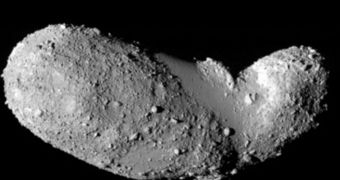As mid-June approaches, a team of scientists is trembling with anticipation at the thought that the long-since-departed Hayabusa space probe may finally return home. The spacecraft is operated by the Japanese Aerospace Exploration Agency (JAXA) and represents the first instance in which a sample-return mission made its way to an asteroid, collected samples, and then returned. If everything goes well, then the probe's payload is scheduled to be dropped in the Australian Outback on June 13.
The return trip home was anything but easy, experts say. The spacecraft met numerous glitches on its way, and for many years experts managing it were convinced that they were looking after a ghost ship. Hayabusa is currently being propelled by a patchwork of engines, in the sense that no single one of its four thrusters is operational, and capable of moving the craft forward on their own. Engineers created all manners of rerouting schemes, in order to ensure that sufficient thrust is ensured for a rendezvous with planet Earth. The Japanese mission has been on “the road” since May 9, 2003.
The spacecraft was ahead of its day at the time of launch. It featured technologies that had not been tried out before on spacecrafts, such as, for example, autonomous navigation systems, samplers and a re-entry capsule. The reason why this mission is so important is because the probe managed to reach an asteroid roaming the solar system, collect dust samples, and then take off from its surface again. While around the space rock, called 25143 Itokawa, Hayabusa experienced a glitch, which made it actually touch down on its surface, rather than just orbit it.
At the time, the doors to its air filters were opened, and astronomers are hopeful that some fragments of space rock may have become attached to the filters. If this is the case, then science will receive the first pieces of space rock collected directly from the source. Generally, all we know of meteorite or asteroids rocks is derived from celestial objects that have fallen on our planet decades to millennia and eons ago. A direct study on these objects could give astronomers, astrophysicists and astrobiologists a window into how life, Earth, the Sun, and the solar system evolved. The capsule that may contain the samples is scheduled to land at the Woomera Test Range, in South Australia, Space reports.

 14 DAY TRIAL //
14 DAY TRIAL //